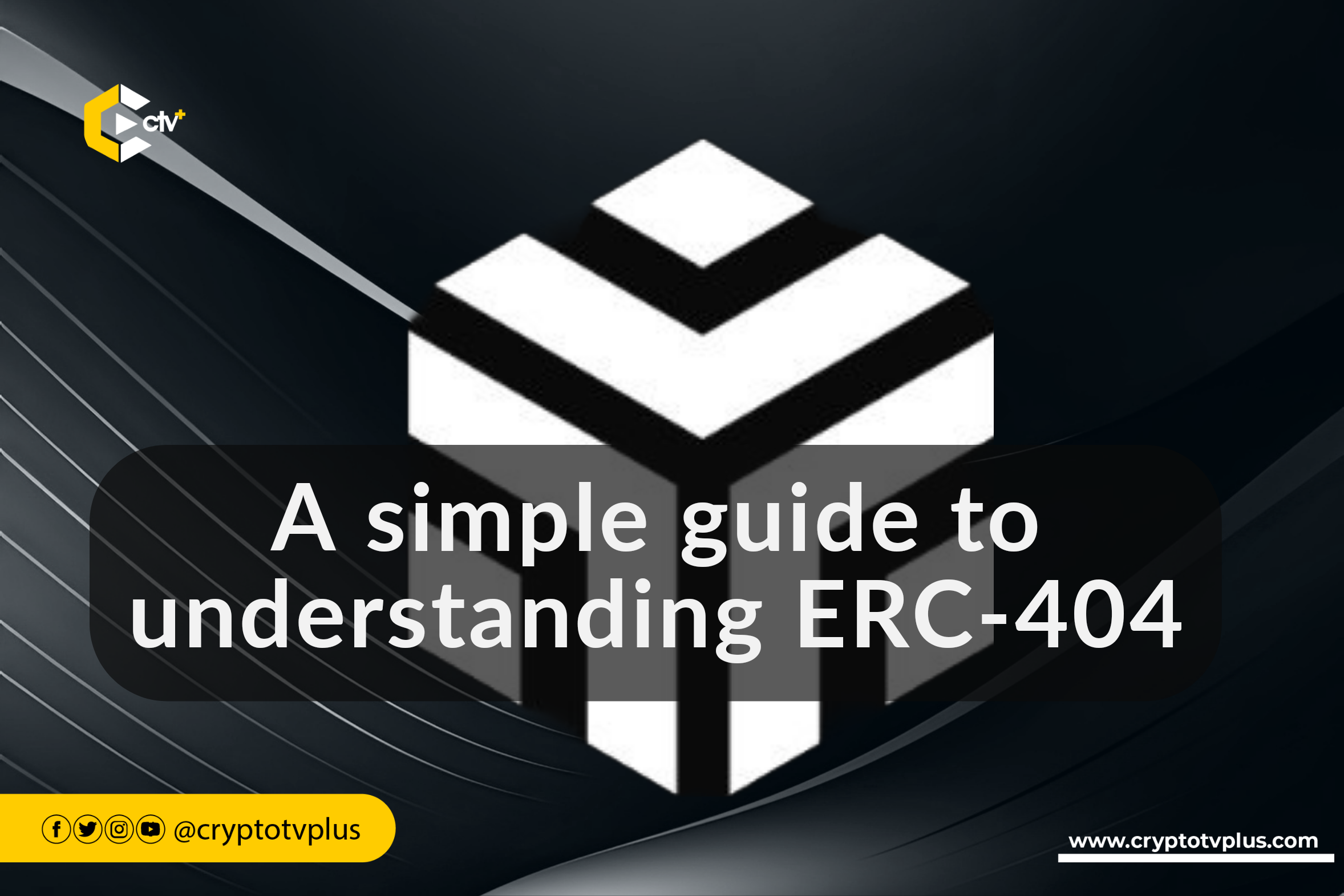Education
A simple guide to understanding ERC-404

Ethereum holds the position of being the second-largest ecosystem in the cryptocurrency realm, trailing only Bitcoin in terms of market capitalization. It has significantly contributed to shaping innovations across the entire crypto landscape. The diverse functionalities of Ethereum are facilitated by distinct token standards identified by the ERC code. These standards are strategically crafted to enable specific outcomes on the Ethereum blockchain.
As an illustration, there are a minimum of four officially approved ERC token standards. These include ERC-20 (utilized for fungible tokens like Ethereum and stablecoins such as DAI), ERC-721 (applied for non-fungible tokens like CryptoPunks and Bored Ape Yacht Club), ERC-777 (designed to enhance ERC-20), and ERC-1155 (enabling the creation of both fungible and non-fungible tokens within a single contract).
In addition to the well-established industry standards, there is growing interest in an experimental standard called ERC-404. A notable project named Pandora has been initiated using the ERC-404 standard.
This article will delve deep into the ERC-404 standard, offering a comprehensive description of its features and functionalities.
What is ERC-404?
ERC-404 represents an unofficial Ethereum token standard developed by the Pandora team. In contrast to conventional token standards, ERC-404 seeks to bridge the gap between fungible and non-fungible tokens, introducing what developers term as a semi-fungible token.
ERC-404 is an experimental token standard on the Ethereum blockchain that aims to combine the functionalities of ERC-20 (fungible tokens) and ERC-721 (non-fungible tokens) into a single standard.
This standard allows for fractionalized NFTs, meaning multiple wallets can own a portion of a single NFT, which can be traded and used for various purposes, such as taking out loans or staking.
Functions and advantages of ERC-404
ERC-404 uniquely links each token to a non-fungible token (NFT), allowing fractional ownership. If a user buys less than a whole ERC-404 token, the associated NFT is “burned” or deactivated, representing fractional ownership.
When the token fraction becomes a whole unit, a new NFT can be automatically minted, offering an innovative approach to managing fractionalized ownership and connecting fungible with non-fungible assets.
ERC-404 addresses liquidity challenges in traditional NFTs. Unlike standard NFTs requiring specific buyers, ERC-404 tokens behave like traditional tokens, allowing holders to sell anytime with an available liquidity pool. This shift could significantly improve NFT market dynamics.
Particularly, ERC-404 provides native fractionalization of NFTs, eliminating the need for separate protocols. This streamlined approach enhances efficiency in creating and trading fractionalized NFTs, potentially unlocking new use cases in decentralized finance (DeFi) like tokenized loans or staking.
Projects created using the ERC-404 token standard
There are at least 15 projects designed using the ERC-404 token standard. The top five according to market capitalization are Pandora; DeFrogs; Rug; Monarch; and Froggy Friends.
Pandora project is the first to implement the ERC-404 token standard, an experimental and unofficial token standard that aims to bridge the gap between fungible tokens and NFTs.
Pandora token was launched at above $1,000 and since then its all-time low and all-time high have been $1,542.25 and $32,493.54 respectively with a remarkable highest market cap of over $300 million. PANDORA tokens traded for over $23,000 within a week of launch.
Additionally, prominent exchanges like OKX and Binance have announced support for ERC-404 tokens on their Web3 wallets which adds legitimacy to the standard and fuels further interest.
Concerns and weaknesses of ERC-404
One of the main concerns is that ERC-404 is not an officially recognized Ethereum token standard, and it has not been fully vetted or audited by the Ethereum Foundation or governance structures.
This means that there is a risk of bugs and vulnerabilities that could lead to potential losses for investors. Additionally, some crypto natives have pointed out that ERC-404 tokens may not be suitable for NFTs that represent real-world assets, as it is not possible to exchange a fraction of a token that represents different asset classes.
Furthermore, there are technical concerns about the “transferFrom” function in the ERC-404 contract, which could pose a risk to users if improperly set up in an application using a shared vault for both token types.
The “transferFrom” function in blockchain, specifically in the context of ERC-20 token contracts, is used to transfer tokens from one address (the sender) to another address (the recipient) while adhering to the allowance mechanism.
The allowance mechanism is a way to control how much a spender contract can transfer on behalf of the owner.
Finally, some experts have criticized ERC-404 for not following standard ERC procedures and not being technically an ERC token, which could limit its adoption and integration with DeFi projects and exchanges.
Closing
The ERC-404 token standard introduces a bold and innovative approach to combining fungible and non-fungible tokens. While its experimental nature raises concerns about security and robustness, the potential benefits, such as improved NFT liquidity and native fractionalization, are capturing the industry’s attention.
As projects like Pandora lead the way, it remains to be seen whether ERC-404 will become an established part of the Ethereum ecosystem to unlock new possibilities for tokenized assets and DeFi.
Read also; StarkWare adjusts STRK token unlock schedule













5 Comments